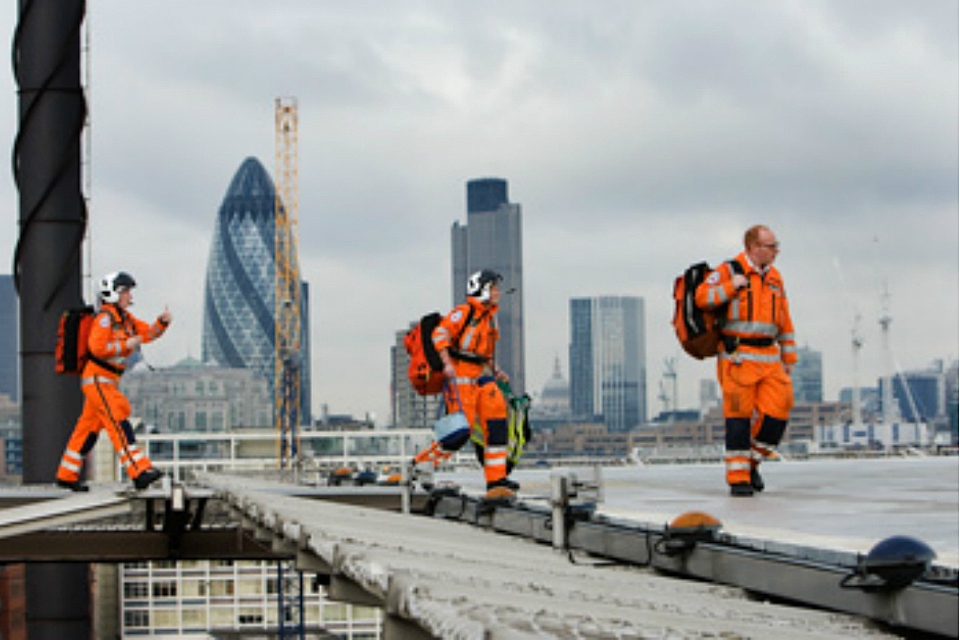- Select a language for the TTS:
- UK English Female
- UK English Male
- US English Female
- US English Male
- Australian Female
- Australian Male
- Language selected: (auto detect) - EN
Play all audios:
19 AUGUST 1997 ------------------------- DEERE LAYS DOWN RUBBER The 8400T is the biggest of four rubber tracked tractors John Deere plans to bring into the UK next year. Geoff Ashcroft
reports "ITS not simply a matter of throwing away the front axle and fitting some tracks," explains John Deeres tractor specialist Gordon Day, about the new 8000T series rubber
tracked tractors. According to Mr Day, although based on Deeres 8100, 8200, 8300 and 8400 wheeled tractors, over 400 new parts have been used in the development of the 8000T series. The
result is a 185-260hp tractor range with a price tag from £103,900 to £121,000. Despite the £32,000 price premium compared to the wheeled alternatives, Deeres managing director Alec McKee
reckons the tracked machines are more than a passing fad. "I expect tracked models to account for about 40% of the 100 or so wheeled 8000 tractors we sell each year," explains Mr
McKee. "We will use this autumn to gauge customer reaction before making the full range available next year." Making up the range is the 185hp 8100T, 210hp 8200T, 230hp 8300T and
260hp 8400T, and from the front weights back to the rear of the powershift transmission, each tractor is the same as its wheeled sister. Beyond this, its all change. The mid-chassis section
is much beefier to carry each track frame. It is on this, that the entire tractors weight is supported. This centre section also carries the fuel tank and hydraulic pumps. Running gear
extends to front idler, three middle rollers and rear friction drive wheel, all wrapped in one-piece 60cm (24in) wide, moulded rubber tracks. By adjusting the position of the track carriage
on its mid frame, the 8000T series can run at settings of 1.72m, 1.82m, 1.93m and 2.23m (68, 72, 76 and 88in). Deere says a narrower 40cm (16in) track will be available to suit 1.52m (60in)
tramlines. Track tensioning is through the use of a hydraulic cylinder with an accumulator, and any reduction in track tension sets off an in-cab alarm. Recharging the system is via the
tractors own hydraulic system. Despite the precariously long nose and heavy front end appearance of the 8000T series, weight distribution is 55% on the front idler and 45% on the rear drive
wheel. Being slightly nose heavy helps to counter some of the torque lift on the tracks caused by heavy draft loads, and it should give the machine a 50:50 weight distribution when in work,
reckons Mr Day. Because the track system uses a smaller diameter drive wheel than the wheeled versions, it means a revised rear end casting and three-point linkage is used. The result is
that the rear linkage is now closer to the rear of the tractor (as there are no large tyres to foul an implement when turning) and this adds to stability when carrying heavy, fully mounted
equipment. Steering the machine is simply a matter of turning the steering wheel, but unlike conventional hydrostatic systems, this one uses an electronic over hydraulic system to
hydrostatically control steering planetary gears – there is no differential and the system does not interrupt the full mechanical powershift drive. A position sensor on the steering wheel is
used to determine how much of a turn is required. This sends information to an electronic control unit which directs oil flow into two swash plate pumps – one on each planetary unit in the
rear axle. By speeding up or slowing these planetaries, track speed is altered and a steering manoeuvre is made. A spring detent returns the steering wheel to centre should the operator let
go and lock-to-lock requires only 1.75 turns of the steering wheel. "Using an electronic-based steering system also allows proportional steering," adds Mr Day. "The faster the
forward speed, the less responsive the system becomes. It makes the machine less twitchy when travelling at 30kph road speed." "The system also allows the tracks to contra-rotate
so we can turn on the spot. Though for safety when the transmission is in park with the engine running, the steering is dead."n _In dry, hard conditions, John Deeres 8000T series
tractors run at 2-5% track slip. Should grip be a problem, up to 14 50kg ballast weights can be added where its needed, says Deere – on each track frame._ _Weight distribution is 55% on the
front idler and 45% on the rear drive wheel. The idea is to give a 50:50 split for heavy duty draft work._ ------------------------- John Deere 8000T series tractors ModelPowerPrice
8100T185hp£103,900 8200T210hp£109,500 8300T230hp£115,400 8400T260hp£121,000








